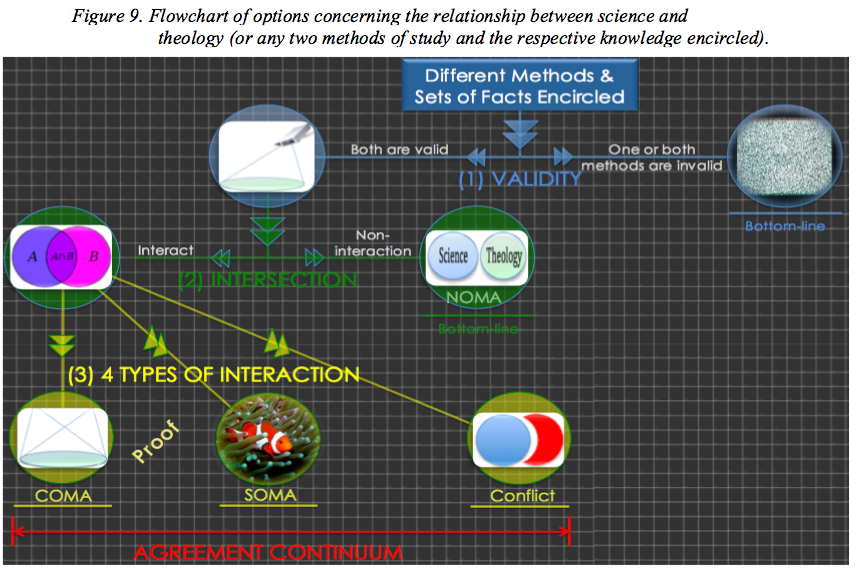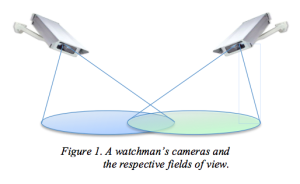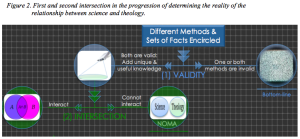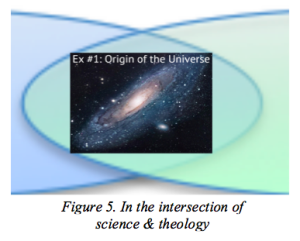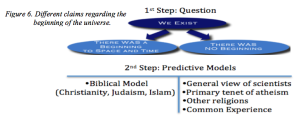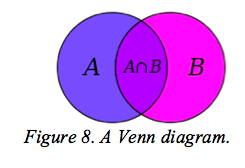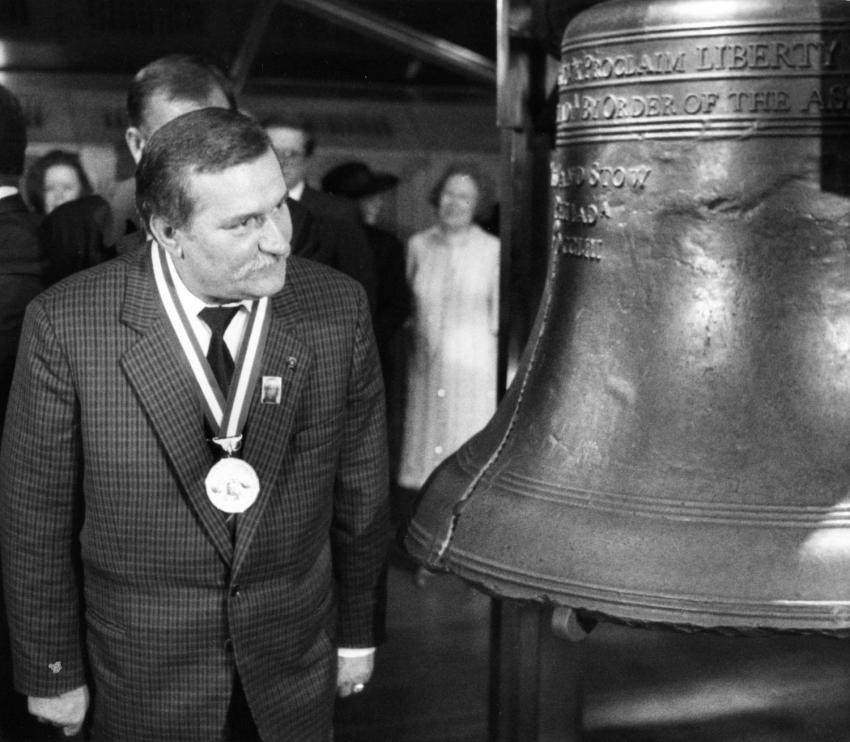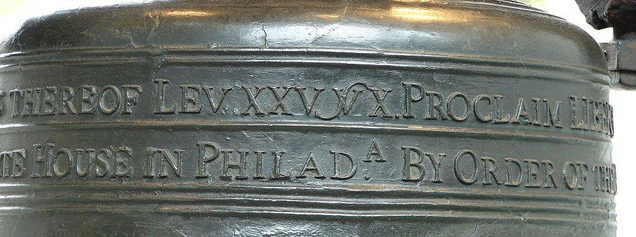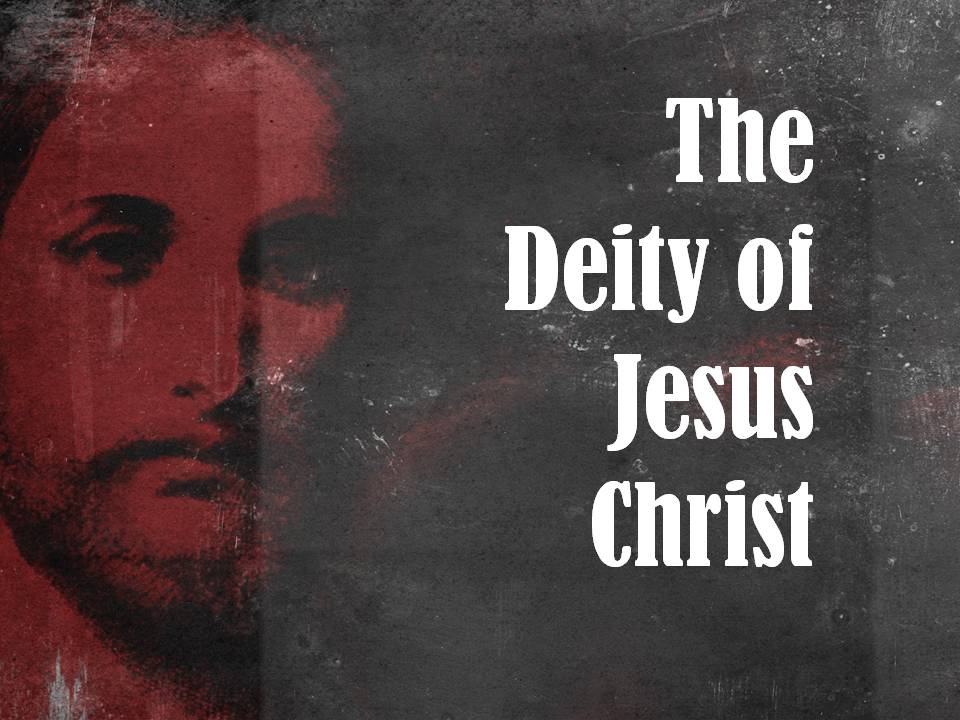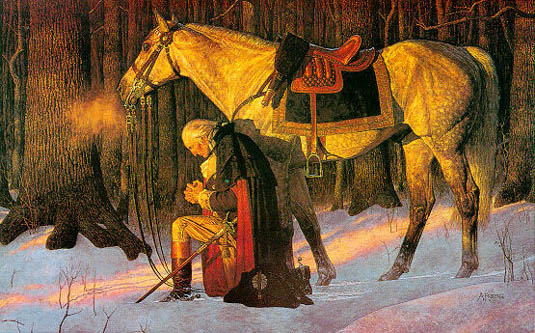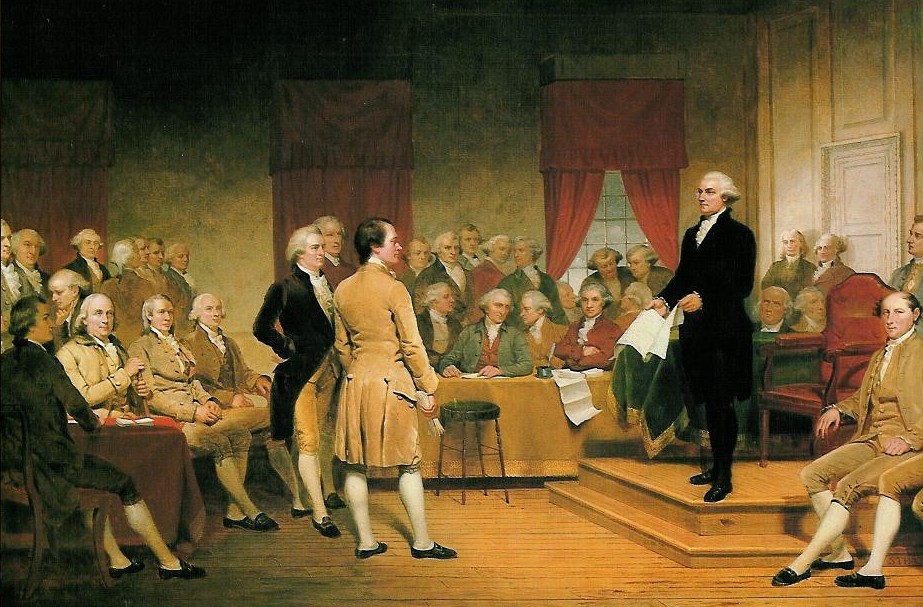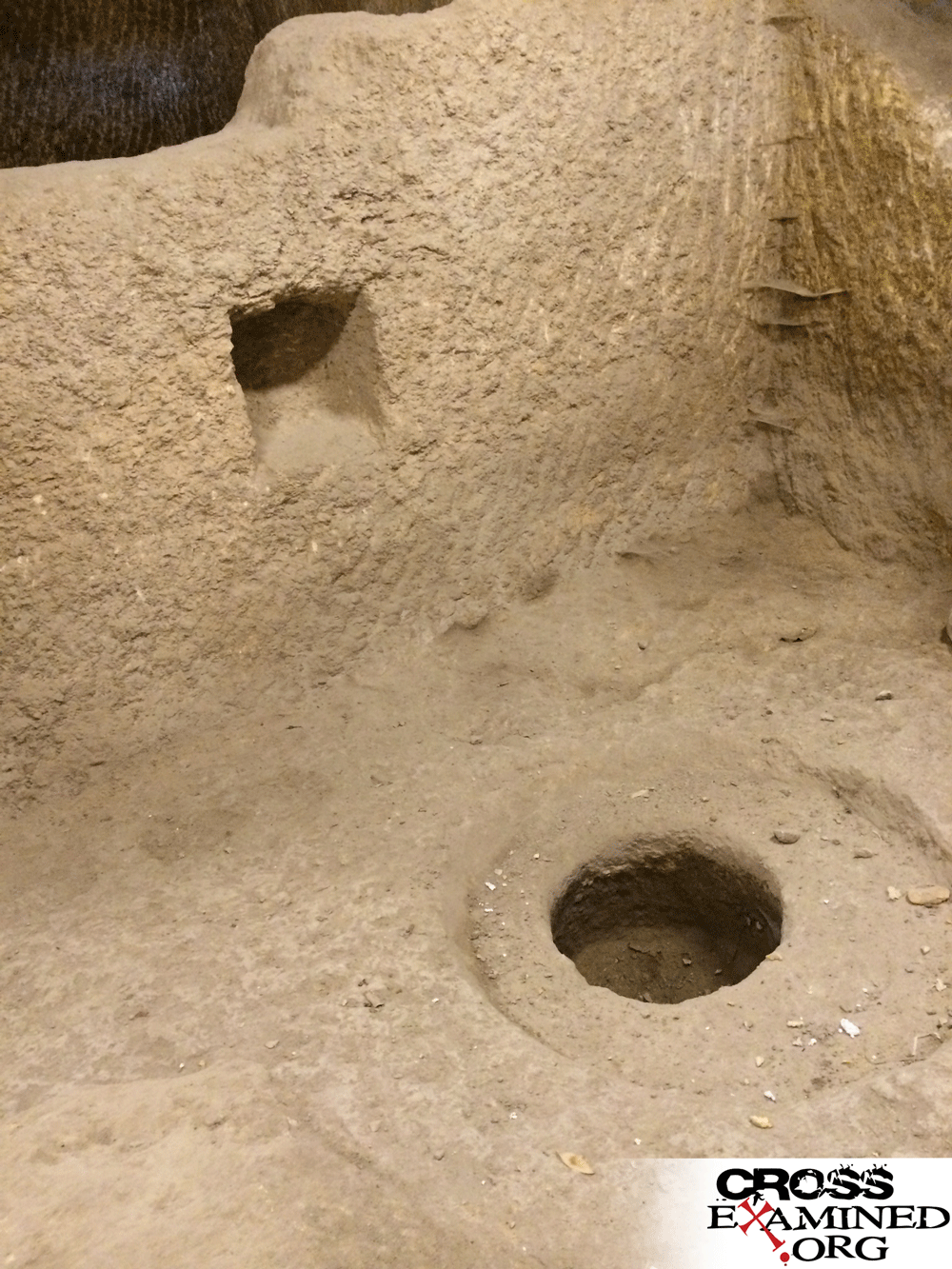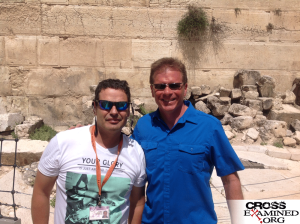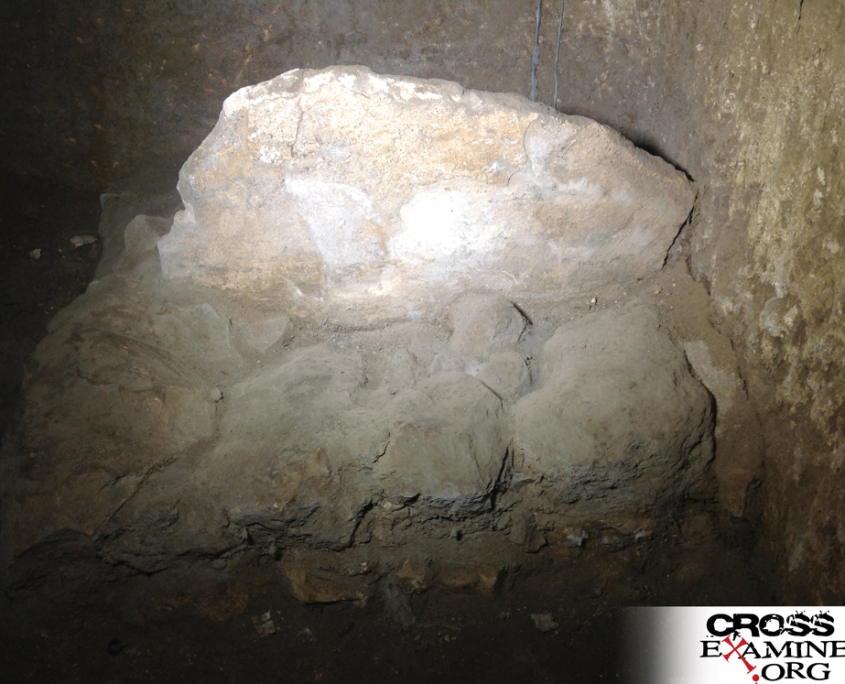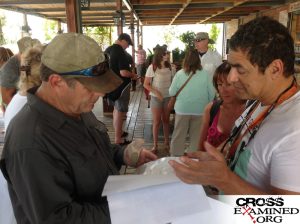Part 1/3
Scott Symington
Medical Physicist, Department of Radiation Oncology, Allegiance Health
Initial draft September 1999, current version April 2015
Abstract
You are fast approaching an “orange” light, within just moments you naturally use viewpoints including physics, history, observation and ethics to arrive at a conclusion to either stop, or pass through. Similarly, most choices in life are best visualized when multiple valid viewpoints, or sources of knowledge, are turned on the subject. The question then arises: what, if any, interplay occurs between differing sources of knowledge, particularly ones as influential as science and theology? While the scholarship appears to diverge into the full range of possibilities, when recognizing accurate points, yet specificity of application in each proffered path, a clear direction emerges to a singular reality of the interaction. If two sources of knowledge are valid, providing unique, useful, and accurate information, and if these sources do interact, the sources will be in concord, even if coming from different viewpoints because each valid source will view the same reality. However, if one or both fields disallow proof, or if lack of data or influential-external factors are involved with the viewers (people), then the interaction will likely display both concord and conflict in a complex contextualized history. Yet, this complex history will trend over time, as the knowledge bases grow in accuracy, conforming towards the reality of the mutually supportive relationship between two valid sources. This paper will progress though: an illustration and definitions, a flowchart displaying our progress through each intersection of possible relationships, thought-provoking examples, and an explanation of relationship between science and theology that has the successful predictive model and demonstrative trend-line.
Part 1. Introduction
One of the earliest memories I have involves a pretty good story. I was on a class field trip and so young that the eight of us were all holding hands with each other, during the entire time at a museum. We sat down in a circle, still holding hands, with myself at one end, the teacher in the middle, and the last student at the other end holding the hand of the museum worker, who was reading us a story.
Almost immediately I lost interest in the story and noticed that there was an open electrical outlet on the wall next to me. Within moments I went through the basic scientific method:
1) Observation or problem: if I jam my fingers into that open outlet, will the shock just get me, or will it make it all the way to that museum reader?
2) Hypothesis: my past history did show that even touching the metal prongs of a night light will shock me, and I heard stories of others touching sticks to electric fences and getting shocked, and, and my mom gave a brief physics lesson noting electricity can travel through some things, so it may make it through a line of connected people. I included views from science, personal history, even ethics, but failed to place much weight on ethics.
3) Test and Data: so, I jammed my fingers into the open-ended wires in the outlet, and sure enough, the back-straightening jolt instantly went through the line of us and terminated with the unsuspecting museum employee.
4) Analysis: my hypothesis was correct and totally worth the effort.
Since childhood, we naturally and efficiently integrate different sources of knowledge when facing a problem to solve, or decision to make. On your way home tonight, you may find yourself fast approaching a traffic light that is “orange”, within just moments you naturally use viewpoints including physics (you don’t actually do a napkin calculation, but consider momentum and road friction); history, you consider occurrences yourself or others have had; observation, check for any nearby police officers; and ethics, wondering if you may put others at risk of injury, to arrive at a conclusion to either stop, or pass through.
Similarly, many choices in life are best visualized when multiple valid viewpoints, or sources of knowledge, are turned on the subject. The question then naturally arises: what, if any, interplay occurs between differing sources of knowledge, particularly ones as influential as science and theology. While the scholarship appears to diverge into the full range of possibilities, considering this vast scholarship on the issue provides two unexpected and significant features: a) each proffered path contains accurate points, and b) each currently proffered theory is restricted to only being applicable to a specific subset of the relationship between science and theology. Taken together, these two unexpected features leads one directly to a singular reality of the interaction between science and theology.
This paper will progress though: an illustration and definitions, a flowchart displaying our progress through each intersection of possible relationships, thought-provoking examples, and an explanation of the relationship between science and theology that has the successful predictive model and demonstrative trend-line.
Part 2. An Illustration and Definitions
2.1 The Night Watchman of the Universe
Imagine yourself as the night watchman of the house of the universe. You are required to stay in the office of life, which gives only a marginal view of the rest of the house. But you have cameras, labeled: physics, philosophy, mathematics, theology, history, and others, which monitor different areas of the house through the respective unique points of view. While each camera sends back its own view and information, you can combine all the views at your terminal in the office, in order to have the most comprehensive possible coverage of the house.
Now and then you notice that some important large areas and some difficult corners cannot be fully illuminated by a camera. Therefore, you simply turn other cameras towards the same area. Even though the cameras will view the area from different points of view, they each still view the same thing and together cooperatively illuminate difficult areas. That is a good system, and the watchman can feel secure of being aware of as much as is possible.
Science and theology are not friends or foes, but different fields of study, or methods to gain knowledge about reality. If both the science cam and theology cam turn to the same aspect of the universe or reality, they together provide a wider field of vision, and not only more knowledge, but also a very productive way to verify or discredit the accuracy each of the points of view provide. Or maybe these two different camera views shouldn’t, or can’t intersect?
2.2 Definitions
Walking out of an Ann Arbor bookstore, I couldn’t stop reading an article by Stephen Jay Gould, “Dorothy, It’s Really Oz!” The narrow-sightedness displayed by the Harvard professor so captured my thoughts, that my focus became similarly constricted, and the myopic article was almost the last thing to pass through the mind of this myopic pedestrian.
Returning to the article, after almost being removed from the gene pool by inappropriate selective attention, I wrote a response article and realized something was wrong with our culture’s mechanism for naturally selecting out faulty ideas. That was over a decade ago, and while my article has evolved to incorporate new discoveries that bolster my position, SOMA, the faulty idea promoted by Gould, NOMA, may not have evolved, but certainly dominates the mental landscape where science and theology meet.
The late professor, author, and scientist was extremely intelligent, and Gould’s accomplishments may be longer than this article, while mine could be stated in a breath. But Gould was simply wrong, due to significant misconceptions of the concepts involved.
Considering the consistent miscommunication surrounding science and theology, it will be helpful to start with definitions of the key terms.
- Science: “(A) systematic enterprise that builds and organizes knowledge in the form of testable explanations and predictions about the universe.”[1]
- Theology: An approach that builds and organizes knowledge from the study of areas relating to God, and knowledge provided by a divine authority.
Of course, a lot of details should be unpacked from these simple definitions, but simple is a nice place to start and to refer back to when these terms are used. The definition of science, provided by Wikipedia above, is a good one as it entails the most important component of science – the approach or scientific method. Yes, science can be defined as the search for causes, or in many other related ways, and the conceptions of science have changed over time with no agreed upon definition even now. Still, the basis for the great success of science is its approach to that search. The science camera provides its view of an issue by starting with a problem or question to answer, then developing a hypothesis, or model, which explains in detail how we think the world may work, next the explanations and predictions of the model can be tested. This testable model approach provides data, which if analyzed appropriately, allows us to follow the evidence into knowledge about reality.
Now science, however you define it, cannot claim exclusive rights on this approach, as it is the same approach each of us use naturally every day, even since childhood, as displayed with my shocking example, but science makes it an enterprise.
Some people choose to add to the definition of science, such as science applying only to issues testable by observation and repeatable experiment. Those are very good tests. On the other hand, such restrictions would render much of human experience outside the limits of scientific inquiry, including past events like the Big Bang, and some of the greatest endeavors in science, which were or still are based on inference to the best explanation. If one chooses to make the definition of science more restrictive, that person only shrinks the circle of what science is able to view or add knowledge within. Gould agrees with me here, and harshly notes the claim that “[The belief that an idea] must be dubious because the process has not been directly observed – smacks of absurdity and only reveals ignorance about the nature of science. Good science integrates observation with inference.”[2] The flexibility or diversity with which some define science impacts the breadth of the viewpoint, and the circle of knowledge the “science” viewpoint will circumscribe and will impact what people will perceive in the interaction between science and theology. However, the reality of the relationship between science, however, defined, and theology will only be impacted in the amount of interaction, not the specific way these two sources of knowledge will relate to each other. Bottom-line, science is a method of obtaining information about reality, and as such provides a circle of knowledge that can or cannot interact with the circle of knowledge provided by other views, including theology.
Most people seem to approach this issue as the relationship between “science and religion,” but “religion” is too convoluted as it involves how people organize around a theology, and includes more than will be covered here. “Theology” was chosen for specificity and simplicity. You could just define it as “the study of God.” The definition used here is more in-line with the definition of “science” as – bottom-line – both are approaches to learn things about reality. Some may want to add to this definition too, but the simple definitions provided above, with the focus on approaches and the knowledge encircled by these approaches, is what is meant in this paper when those terms are used.
[1] Wikipedia, http://en.wikipedia.org/wiki/Science.
[2] Stephen J Gould, “Dorothy, It’s Really Oz”, Time 154 (1999), Viewpoint. http://www.arn.org/docs/kansas/gouldks823.htm.
Part 3. A Flowchart
To begin, mutually exclusive theologies must be considered separately in their respective relationships with science, as the mutually exclusive relationships will obviously differ. Thomas Dixon, et al., supports this by noting that this study cannot progress in isolation from the reality of religious pluralism, and implied in Dixon’s point is the recognition of the law of non-contradiction as applied to the pluralism.[1]
[1] Thomas Dixon, Geoffrey Cantor, and Stephen Pumphrey, Science and Religion: New Historical Perspectives, Cambridge University Press (2010), 41.
3.1 First Intersection: Validity
The first point of intersection, when considering how two sources of knowledge relate to each other, is determining whether both sources are valid, or if one or both sources are not valid. The term “valid” is used here to mean a source of knowledge that provides unique and accurate knowledge about reality. Both science and theology are certainly valid in this sense, which I do not except anyone to accept without evidence, but will be evident in examples provided shortly.
An example, however, going the other route, would be the relationship between mathematics and astrology. Astrology is not a valid source of knowledge. This source does not provide accurate knowledge about reality. If an invalid source of knowledge does happen to interact with a valid source, then the interaction will either be one of non-interaction, unimportant interaction, a conflict where the two sources interact, or only insignificant or apparent concord. If not at a point of complete knowledge, then there can be apparent concord, but likely the trend over time will be increasing conflict as the quantity and quality of knowledge grows. For example, here is an intersection between mathematics and astrology from a challenge I posted to a claim supporting astrology:
Test it. Each week, have someone cut out all the horoscopes from the week before, but remove the labels “Capricorn”, “Gemini”, or whatever, and pick the one that precisely described your week. Did you pick your sign? Do this over a year and see how many you got right. Just picking the horoscopes out of a hat will result in ~10% of the time getting your sign, so how much more than 10% did you get? How accurate is your horoscope really? The more you do this test, the more your results are likely to conform to just randomly picking your horoscope blindly out of a hat. I am sure it is not “OMG so accurate!” as claimed in the article.
There is a bottom-line: if a source of knowledge, or the camera and circle of knowledge it provides, as illustrated with the watchman example, is not a valid source for knowledge about reality – turn that camera off. Such a camera only provides noise, and only interferes and is detrimental to the likelihood of making decisions that are best for you.
If, on the other hand, both sources of knowledge, or cameras, do provide valid views of reality, then we come to a second point of intersection: either these two sources do or do not interact.
3.2 Second Intersection: Interaction
With an understanding of the terms “science” and “theology” as they are used in this paper, we now proceed to how these terms interact. Some like to think that science and theology can’t play nice together, or further, cannot play together at all. Conversely, I believe there will be a day when little science and theology ideas and models will join hands as symbiotic [1] siblings and will be judged not by their point of view, but by the validity and productive output of their content. No offense in mutating Dr. King’s famous lines, actually, he would likely agree with the above thesis. And, in fact, science and theology have already been engaging in a mutually beneficial and supportive relationship, which, after explaining the NOMA and SOMA models, will be demonstrated with one of science’s greatest areas of discovery.
3.2.1 NOMA
An eminent paleontologist, the late Stephen Jay Gould, provided a good description of a very common thought regarding science and theology, in his article presented in Time. Gould was responding to the Kansas Board of Education’s consideration of removing the Big Bang theory and evolution from the state’s science curriculum. Gould correctly stated that such a move would limit the students’ view of reality to what the Board decides. This was a clear demonstration of religious people shutting off their science cam, and trying to force others to a similarly restricted view of the universe. Weak thinking.
Gould then spends the rest of his article supporting his declaration that “these two great tools of human understanding (science and religion) operate in complimentary (not contrary) fashion.”[2] The professor is close to hitting upon a rock-solid point, but then displays the fault-line in his reasoning by adding that science and religion work together “in their totally separate realms (my emphasis): science as an inquiry about the factual state (again, italics mine) of the natural world, religion as a search for spiritual meaning, and ethical values.”[3] In other words, in the science circle are contained all facts and truth about reality, while in the religion circle are “spiritual meaning and ethical values”. Sounds weak.
Yet, W.T. Stace, a philosopher of religion also thinks the two fields are independent, each consistent and complete in its own domain.[4] The U.S. National Academy of Science supports the independence view also with its statement:
Science and religion are based on different aspects of human experience. In science, explanations must be based on evidence drawn from examining the natural world. Scientifically based observations or experiments that conflict with an explanation eventually must lead to modification or even abandonment of that explanation. Religious faith, in contrast, does not depend on empirical evidence, is not necessarily modified in the face of conflicting evidence, and typically involves supernatural forces or entities. Because they are not a part of nature, supernatural entities cannot be investigated by science. In this sense, science and religion are separate and address aspects of human understanding in different ways. Attempts to put science and religion against each other create controversy where none needs to exist.[5]
The statement above not only depends on the logical fallacy of a strawman argument, but also glosses over the interaction by claiming religious faith “typically” involves supernatural entities, and this is not always the case as certainly theology makes claims about the natural world where science would interact.
Aside from the errors involved in the statement given above, there is something even more fundamentally faulty: does reality neatly separate itself, like high school subjects during my tenure as a student? So if we want facts about reality, then we must look in the science circle, while whatever Gould meant by “spiritual meaning” separates itself out, and lands only in the theology field of view?
Believers in NOMA, including other scientists and some contemporary theologians, for example, Wittgenstein and Randall and possibly Sam Harris, believe these two fields of study address fundamentally separate forms of knowledge and aspects of life, and are too diverse to intersect, or accept some form of the non-intersecting models, and (excluding some like Dawkins and possibly Bill Nye “The Science Guy”) typically have no problem with those who want to use their theology camera, but expect those who do to keep that camera turned away from the area encompassed by science. Never the twain shall meet. This view, labeled “Non-Overlapping Magisterial” (NOMA) is illustrated below.
[1] I heard this term used by John Clayton of the Does God Exist? organization in the 1990’s in relation to the relationship.
[2] Gould, “Dorothy, It’s Really Oz.”
[3] Gould, “Dorothy, It’s Really Oz.”
[4] W. T. Stace, Time and Eternity: an Essay in the Philosophy of Religion (Princeton University Press, Princeton, NJ, 1952).
[5] National Academy of Sciences, Institute of Medicine, Science, Evolution, and Creationism, National Academies Press, Washington (2008), 12.
In the years since Gould’s article, his NOMA belief has become the dominant popular understanding (or possibly the conflict model). Nevertheless, the popular belief is not always the one founded on reality. NOMA is valid, if and only if the following conditions are met:
NOMA is accurate, if and only if:
- No area of life (or reality) can be addressed by both science and theology.
- Theology cannot provide a testable, falsifiable scientific model.
- Theology cannot add accurate knowledge to the “factual state of the natural world,” or to any area contained in the circle encompassed by science, and vice-versa with science into the theology circle.
- Neither field can provide support, or denial, or interact with any knowledge encompassed by the other circle of knowledge.
NOMA artificially creates separate and unequal “magisteria,” or circles of knowledge. Both the religious people Gould chided in his article, and interestingly enough, Gould himself, based their positions on the misconception of “faith” as they conflate “faith” with a specific subset of faith, often referred to as “blind faith” or belief without supportive reasons, and incorrectly assumed knowledge about reality in the theology circle does not involve reasons, facts, supportive evidence, claims about the natural world, or testable models. So both sides in that Board of Education debate wanted to keep the two fields of study from mixing. I never knew Gould, and cannot claim he turned off his theology camera in his personal life, but he certainly disregarded it when trying to gain a picture of the “factual state of nature,” and thought it impossible for both cameras to point to the same area of reality and each provide the same, accurate, factual information.
And as far as scientism, the belief that all that can be known about our universe will be gained through science, not much space will be spent on this belief here, other writings have shredded this idea, maybe a century ago now. Briefly, you have to step outside the science circle to believe in scientism. One cannot prove through science that scientism is true – that is a philosophical claim. Proponents would have to know enough about reality to claim all that can be known will be made known through science. That is a bold claim without the evidence to rationally believe it. Even before beginning to utilize science, one must start with philosophical assumptions of realism, laws of logic, etc., and if you have to rely on philosophy to even do science, then science is not the all-in-all. Scientism is an invalid belief.
The night watchman described earlier is a person, and when people are involved, even the best system can fail. A watchman may decide to shut-off, or not pay attention to a camera, but disregarding a camera is only warranted if it fails to provide a unique point of view unattainable by the other cameras, and accurate information. Otherwise, that careless watchman self-inhibits the view, creating a blind spot.
People, acting as a watchman, may try to justify turning off the history cam because they don’t like to focus on the past, or the mathematics cam, claiming the wiring is bad. I have spoken to historians and mathematicians, and while they may be past-centered and wired differently, respectively, the view each provides is necessary to have a comprehensive understanding of reality. Stephen Hawking, and other physicists have openly declared their belief that the philosophy cam provides no new information not already provided by science. However, had their philosophy cam been turned on, then those physicists would have watched themselves step outside the circle of science and step right into the circle of philosophy; because their claim is a philosophical one – a bad one – and the philosophy camera would have shed light on that bad philosophy. Reality doesn’t disjoint itself to always fall neatly into one discipline or the other but instead is best determined when all possible cameras provide their views of the area (or subject in reality), allowing for diverse study and multiplied validation.
3.2.2 SOMA
The model I proposed in 1999, in response to Gould’s article, is called Symbiotic Overlapping Magisteria (SOMA), where different approaches to the study of reality, whether science, theology, philosophy, mathematics, history, and other fields, all have areas of life they may exclusively contain, but also have many areas of knowledge that can be simultaneously viewed by multiple fields, providing mutually beneficial and supportive interaction, which biologists would call a symbiotic relationship. This idea, as opposed to NOMA, is valid if and only if the following conditions are met:
SOMA is accurate, if and only if:
- There is an area(s) of life that can be addressed by both science and theology.
- Theology adds accurate knowledge to the “factual state of the natural world,” or to any area contained in the circle encompassed by science, and vice-versa with science into the theology circle.
- In that intersection of the circles, inaccurate interpretations or understandings in the science or theology views can be called into question by the other, and areas of knowledge can also be confirmed by the two independent approaches.
- Theology can provide a testable, falsifiable, scientific model.
Only one example is needed to invalidate NOMA, and meet the criteria of SOMA, and that knock-out-shot example is found right from the start – the beginning. The study of the beginning of the universe is saturated with Nobel Prizes, top-rate scientists, some of the greatest discoveries of modern science, and claims from every worldview belief system and theology. The science and theology cams have both been focused directly on this issue, and what has been found in the intersection of these views?
3.2.3 One Example: A Knock-Out Shot
We exist, unless you are a first-year philosophy student or an obsessive Matrix fan, the existence of ourselves and the universe can be taken as a given, or a properly basic belief. If we exist, then our existence leaves only two possibilities: either our universe had a beginning, or it did not have a beginning. Those are the only two options. Simple.
So we have the first step in the basic scientific method, problem/question: Did our universe have a beginning? This question of origins is also one of the core or “big questions” in life and worldview beliefs. Also very useful, the different worldviews and science took the second step in the scientific method by providing their respective hypotheses or models, and divide clearly between these two options. Let’s consider what each model predicted before the evidence came in.
Christian theology will be focused upon since much of the scholarship regarding the interaction of theology and science concerns Christian theology, yet the reader may take any other theology and do the same comparisons that follow. As far as theology, the biblical model, millennia before modern science brought its tests, not only predicted the universe had a beginning but also provided the gold-standard that science seeks in its models – predictions that were unable to be known unless the model is on to something unique. Such as:
(1) The universe, and all that is a part of the universe, had a beginning (Genesis 1:1, compound use of Hebrew words “shamayim” (heaven) with “aretz” (earth), refers to everything of the entire universe; John 1:3, everything aside from God was created, was caused, and has a beginning).
(2) Time itself had a beginning (Genesis 1:1; Hebrews 1:10; Jude 1:25).
(3) Space and time began together (Genesis 1:1; use of “bārāʾ” refers to divine creating something new out of what was not in existence before, and this happened at “the beginning”).
(4)-(5) The universe came from not anything visible or of this universe (Gen. 1:1; Heb.
11:3; John 1:3).
(6) The universe follows fixed laws (Jeremiah 33:25-6).
(7) The cause of the universe is given very specific properties, some of which include: uncaused, and outside of, or beyond space, time, matter and all nature.
There are more, but these will do for now. As for the other models, possibly all theology models not tied to the Bible, predicted an uncaused, eternal universe, some with variations like an eternally cycling universe. Those in the scientific community generally accepted an eternal universe, as well as atheists in general; consider the first affirmation of Humanist Manifesto I.[1] If your worldview belief’s model is not provided, then add it on one-side or the other, beginning or no beginning.
3rd Step: Test the Models
It is important to keep in mind the Bible is not a scientific text, meaning its stated purpose is more of a love letter from God, explaining our situation, and giving Basic Instructions Before Leaving Earth. Therefore, care must be taken in not extrapolating beyond what the Bible is providing to make a claim in the area of science. Nonetheless, theologies, the biblical model included, make claims about the natural world, and when these are clear and specific, like the ones above, then these claims are simultaneously in both the domain of theology and of science. William Lane Craig echoes this idea: “When religions make claims about the natural world, they intersect the domain of science and are, in effect, making predictions which scientific investigation can either verify or falsify.”[2]
This is already not looking good for NOMA, if the theologically produced models are testable/falsifiable, NOMA is no mas, as these theologically elucidated areas are also in the realm of science. And it only gets worse for NOMA fans. Let’s look at the tests and analyses.
The evidence is in, and includes: some of the greatest discoveries of modern science, multiple Nobel Prize winners, Einstein’s field equations of General Relativity, Hubble’s telescope, Hawking’s space-time theorem, the microwave background radiation and ripples, and great quotes, such as Alexander Vilenkin’s noting, “It is said that an argument is what convinces reasonable men and a proof is what it takes to convince even an unreasonable man. With the proof now in place, cosmologists can no longer hide behind the possibility of a past-eternal universe. There is no escape, they have to face the problem of a cosmic beginning.”[3]
People have attempted the myriad of ways to get around the universe having a beginning in the finite past, typically I would provide a survey and the recognized refutations of those ideas, but for this discussion will leave that to the reader’s discretion. To not believe in the beginning of the universe, one would have to go against ALL the evidence. When one side of the argument has ALL the evidential support, and the other side has NONE, then even a graduate from Ohio State University can figure out what that means (I am a University of Michigan fan, whose football enjoyment has been greatly abused by that team to the south).
What science now knows:
(1) The universe and all that is a part of the universe had a beginning nearly 14
billion years ago.
(2)-(3) Time itself had a beginning and is linked with the universe, physicists and
astronomers use the phrase “space-time fabric” of the universe.
(4)-(5) There was nothing, not anything of our natural universe, then a super dense, super hot, the universe came into existence, and was so dense and hot that no light was able to be released until almost 400,000 years later.
6) The universe began expanding and cooling following fixed laws of nature.
7) Discoveries lead to specific properties of the cause of the universe.
Look again at the biblical model’s predictions. The phenomenal match between the biblical description and what modern science discovered has not been lost on those scientists involved.
- Astronomer Sir Frederick Hoyle was confronted with the points mentioned above about the beginning of the universe, but he believed the universe was eternal and ridiculed the idea of a beginning as “scientific Genesis.” He called the theory the “Big Bang” in his disbelief. The name stuck. Hoyle later remarked, “there is a good deal of cosmology in the Bible.”[4]
- Robert Jastrow, founder of NASA’s Goddard Institute of Space Studies said: “…astronomical evidence leads to a biblical view of the origin of the world…. the essential element in the astronomical and biblical accounts of Genesis is the same.”[5]
- Nobel Prize winners Penzias and Wilson add respectively: “The best data we have (concerning the Big Bang) are exactly what I would have predicted had I had nothing to go on but the five books of Moses, the Psalms and the Bible as a whole.”[6] And, “Certainly there was something that set it all off…. I can’t think of a better theory of the origin of the universe to match Genesis.”[7]
Mathematical physicist Frank Tipler sums up one of the conclusions: “From the perspective of the latest physical theories, Christianity is not a mere religion, but an experimentally testable science.”[8]
[1] Raymond B. Bragg, Humanist Manifesto I, American Humanist Organization,
http://americanhumanist.org/Humanism/Humanist_Manifesto_I (1933).
[2] William Lane Craig, “What is the Relation between Science and Christianity”, Reasonable Faith,
http://www.reasonablefaith.org/what-is-the-relation-between-science-and-religion (2014).
[3] Alexander Vilenkin, Many Worlds in One (New York: Hill and Wang, 2006), 176.
[4] Fred Hoyle, The Nature of the Universe, second edition (Oxford: Basil Blackwell, 1952), 109.
[5] Robert Jastrow, God and the Astronomers (1992), 14.
[6] Arno Penzias, interview in New York Times on March 12, 1978.
[7] Robert Wilson, interview with Fred Heeren, Show Me God: What the Message from Space Is Telling Us About God (Day Star Publications, 2000), 157.
[8] Frank J. Tipler, The Physics Of Christianity (New York, Doubleday, 2007), Preface.
4th Step: Analysis & Conclusion
It is simply false to claim theology doesn’t make factual claims about the natural world. For example, the world religions make various and conflicting claims about the origin and nature of the universe and humanity. Therefore, the idea of non-interacting fields of science and theology, and NOMA, is falsified.
Theologies have produced scientifically testable models. The theological approach utilizing the Bible provided accurate factual knowledge about the natural world and did so in an area science also addresses. NOMA is double-falsified.
And from that point, science supported theology in that it exposes inaccurate theologies, and adjudicates between mutually exclusive ideas. Other theologies, Hinduism, Buddhism, etc., predicted an uncaused, eternal universe; the worldview of atheism predicted the same; science and common thought even into the 1950’s held to the eternal universe. Therefore, science can support, deny, or interact with the subject(s) encompassed by the theology circle of knowledge. This triple-falsification invalidates NOMA and demonstrates the symbiotic relationship of SOMA precisely.
Just as science provides maintenance for theology, the reverse also occurs. While not attempting to be a science textbook, the theological text does account for properties in nature that can be tested. While all reasonable options need to be explored, just think if researchers gave more credence to the biblical model of the beginning, more time and effort could have been directed correctly, instead of focusing on faulty conceptions that science and other belief systems held even through Einstein’s time. Further examples are discussed in section 3.3.5.
We started at the beginning of the universe, and what is the next logical question? What was the cause of the universe? And again we find the same trail of evidence supporting SOMA and disproving NOMA. Because this paper is not focused on covering all the intersections, the cause of the universe and fine-tuning will not be covered here, but astronomer Robert Jastrow’s revelation is fitting: “For the scientist who has lived by his faith in the power of reason, the story ends like a bad dream. He has scaled the mountain of ignorance; he is about to conquer the highest peak; as he pulls himself over the final rock, he is greeted by a band of theologians who have been sitting there for centuries.”[2]
[1] Robert Jastrow, God and the Astronomers (1992), 106-107.
[2] Robert Jastrow, God and the Astronomers (1992), 106-107.
3.2.4 Relationship Described by Set Theory
What has been shown above can be described in basic set theory, and the Venn diagrams we experienced in elementary school. Set theory was originally developed and utilized in mathematics, so if my application or memory of set theory runs afoul, I would appreciate corrective comments to make the explanation more accurate and robust. A set is a collection of things or elements, for example, a set A includes all even numbers 1-10, while set B contains even numbers 6-20, which would be written as: A = {2, 4, 6, 8, 10}, B = {6, 8, 10, 12, 14, 16, 18, 20}. Sets can even contain other sets, for example, if set A and B are both elements of set R, (written as A∈R and B∈R), then: R = {A, B} = {2, 4, 6, 8, 10, 12, 14, 16, 18, 20}. A union of sets means that you combine all the elements in the union, or joining of the sets, so the union of A and B would be: A È B ={2, 4, 6, 8, 10, 12, 14, 16, 18, 20}. The intersection of sets means all of the elements that are in common between the sets. For example, the intersection of sets A and B would be A ∩ B = {6, 8, 10}. This can be illustrated with a Venn diagram.
As applied to the relationship between science and theology, let the knowledge obtainable through science be set S, the knowledge obtainable through theology be set T, and all the knowledge about reality be set R. So set S will include elements such as S = {helical structure of DNA, Maxwell’s equations, optics, black holes, the beginning of the universe, … }. Set T will include elements such as: T = {does God exist, what is God like, has this being communicated with us, objective morality, free will, inherent value/purpose of life, claimed historical events, after-life, NDEs, claims about numerous aspects of life, the beginning of the universe, … }. There are other sets or approaches that bring knowledge about reality, including (Ph)ilosophy = {laws of logic, realism, ethics, logical fallacies, deductive reasoning, inferential reasoning, … }, (H)istory, (M)athematics, (P)sychology, etc. Set R will include knowledge gained about reality from every set, including S and T, R = {S, T, Ph, H, M, P, …}.
For NOMA to be true, there can be no element (e) that is factual knowledge about reality, which can be found within (T)heology. Further, there can be no e that is found in both S and T; S ∩ T = Æ, these two sets must be disjoint.
But there are multiple elements, e’s = such as facts about the beginning and cause of the universe, which are found in the intersection: S ∩ T = {all matter, energy, and space had a beginning, time had a beginning, the cause is able to produce matter and energy from no “natural” thing ontologically prior, the universe follows fixed laws, … }. Formally, if e = the fact that the universe had a beginning, then S ∩ T = {e : e ∈ S ∧ e ∈ T }. Therefore, NOMA is false.
SOMA accurately describes the relationship between science and Christian theology. Notice how similar figure eight from Wikipedia is to my SOMA diagram, figure four. And, in that area of intersection, you could picture not just the Big Bang, but many other areas of knowledge to further establish this idea. For example, a psychology professor at a prominent university on the U.S. west coast, whose lectures were often overflowing with unregistered students and other professors, was once asked what was the key to a “good and happy life.” The professor responded that the most succinct and accurate prescription he had ever encountered for a healthy life was given by Jesus in the Sermon on the Mount (Matthew 5: 1-12). P ∩ T = {e : e ∈ P ∧ e ∈ T }. The professor did not want his identity given due to possible repercussions for his theological statement, so you can take this example or leave it. But before you leave it, read the biblical passage yourself to consider the subject.
Additionally, the Bible has been scoured with the finest-toothed historical combs, due to the massive number of specific historical data provided. Critics have claimed numerous errors as had been found in any comparable writing. The accepted belief in historical studies was that there was not even writing during Moses’ time, the Davidic tunnel was a myth and excavation seemed to verify the inaccuracy, the Hittite people never existed, the alleged researcher Luke must have gotten many facts wrong in his gospel account. Further study revealed: the biblical account of writing during Moses’ time was correct, the Davidic tunnel was found and is a tourist attraction today, and thousands of artifacts now bring a wealth of information about the Hittites.
Regarding the reliability of Luke, and the biblical account in general, archeologists have targeted the biblical source as no other, and their results have been declared by top researchers in the field. William F. Albright, who is respected as possibly the top archeologist of this century, stated: “There can be no doubt that archeology has confirmed the substantial historicity of Old Testament tradition.”[1] Sir William Ramsay, considered one of the greatest archeologists to have ever lived, serves as another source. His schooling led him to believe that the scripture records were unreliable, but he had to consider biblical writings of Luke for a study of Asia Minor. His belief was completely reversed and he became a Christian through overwhelming evidence uncovered during his studies. Ramsay declared:
I began with a mind unfavorable to it (the truth of the biblical record), for the ingenuity and apparent completeness of the Tubingen theory (a theory that rejected the reliability of Luke’s writings) had at one time quite convinced me. It did not then lie in my line of life to investigate the subject minutely; but more recently I found myself brought into contact with the Book of Acts (a book in the Bible that was written by Luke, who wrote one-quarter of the New Testament) as an authority for the topography, antiquities, and society of Asia Minor. It was gradually borne upon me that in various details the narrative showed the marvelous truth… I gradually came to find it a useful ally in some obscure and difficult investigations.[2]
Then after 30 years of study, regarding Luke’s ability as a historian, Ramsay declared that “Luke is a historian of the first rank; not merely are his statements of fact trustworthy . . . this author should be placed along with the very greatest of historians.” And to reinforce the check-ability aspect, Ramsay affirms: “Luke’s history is unsurpassed in respect of its trustworthiness.”[3] H ∩ T = {e : e ∈ H ∧ e ∈ T }.
If two sources of knowledge are valid, and if both view the same subject, then the views will show the same thing. And if a specific theology has a concordance in the intersection with science, or in other ways is demonstrated to be a valid source of knowledge about reality, then one would expect to see the same type of interactions with other valid sources of knowledge, such as philosophy, history, archeology, etc. Conversely, contradictory theologies to a valid one would likely demonstrate a trend in the opposite direction in the interaction with other valid methodologies for gaining knowledge. The biblical model again was and is the focus of most scholarly writings on the interaction, but the same comparisons can be done with other theologies and is left to the reader and other researcher’s discretion.
Bottom-line
The belief that science and theology cannot interact is mistaken. However, one can show that these fields of study have very different sources of data, and contain much in their respective circles of knowledge that is independent from the other’s circle – so the NOMA view is applicable, but only in this limited way. Keep this in mind (a model concerning the relationship between science and theology being partially accurate, but only applicable to a limited scope), as it will recur in other proposed models.
First, it has been demonstrated that indeed there are facts or knowledge about reality that can be cooperatively illuminated by both the theology and science cameras, or approaches, and fit simultaneously in both circles of added knowledge.
Second, both theology and science benefit from corrective and corroborative support from each other, and other fields of view, such as history, philosophy, etc. Theology provided a number of contradictory views about the beginning and cause of the universe, as noted in the predictions step, and science helped eliminate inaccurate viewpoints and provide support for the correct view(s). While benefitting from phenomenal verification regarding the beginning of the universe, Christian theology also obtained corrective support. The Aristotelian view about the earth being at the center of the universe was accepted by the culture and many in the church of Galileo’s time. While the account of Galileo’s trials has often been portrayed erroneously in many presentations I have witnessed, the church leadership, particularly a cardinal who got his ego tweaked by Galileo, did buy into the faulty idea and used a biblical passage to try to support it. Science provided knowledge about our solar system, which led to further research into the biblical passage and exposed faulty extrapolations from it made by some in the church.
Third, some theologies do not provide testable/falsifiable models, and some do. The ones that do can be checked throughout the history of discovery, in every field of knowledge. Trends are important indicators. You see trends in your grades, the economy, your health, and other areas, and trends speak loudly. If a theological or scientific view is valid, as time goes on, new discoveries and confirmation between different fields of study will increase, or the opposite, if the view is not true. Although over what time frame will the accurate trend arise? Who knows, as it depends on a number of factors, but we do have a considerable history of the development of knowledge and equally significant trends have emerged. Check for your self, the relationship between specific theologies and science, history, philosophy, and other fields do have demonstrative inclinations. More about the SOMA model later.
As scholars began rejecting the NOMA model, the recognition of the interaction and the modern dialogue between religion and science grew in popularity with Ian Barbour‘s 1966 book Issues in Science and Religion. Since that time, the study of the relationship has grown into a serious academic field, with academic chairs in the subject area, and dedicated academic journals, Zygon: Journal of Religion & Science, Perspectives on Science and Christian Faith, and Theology and Science. Articles are also found in mainstream science journals such as American Journal of Physics, Nature, and Science.
Institutions interested in the intersection between science and religion include the Center for Theology and the Natural Sciences, the Institute on Religion in an Age of Science, the Ian Ramsey Centre, and the Faraday Institute. Numerous scholarly works are available, as are numerous societies for promoting this dialogue, for example, the European Society for the Study of Science and Theology, the Science and Religion Forum, the Berkeley Center for Theology and Natural Science, and so on. Very significant on-going conferences sponsored by the Berkeley Center and the Vatican Observatory, in which prominent scientists like Stephen Hawking and Paul Davies have joined with prominent theologians like John Polkinghorne and Wolfhart Pannenberg to discuss the interactions and implications. The Templeton Foundation has awarded its million dollar Templeton Award in Science and Religion to integrative thinkers like the aforementioned Paul Davies, John Polkinghorne, and George Ellis for their work in science and religion. The dialogue between science and theology is so significant that both Cambridge University and Oxford University have established chairs in science and theology. The interaction between these two sources of knowledge has been the source of consistent and substantial scholarship.
With the NOMA model’s exposed limited applicability, and failures, and the movement of scholarship into the interaction models, what type of interaction has been found? This is the topic of part 2 of this series, which eliminates two other popular thoughts on either extreme.
[1] William F. Albright, Archaeology and the Religion of Israel (Baltimore: Johns
Hopkins Press, 1942), 176, as cited by McDowell, New Evidence that Demands a Verdict (Nashville: Thomas Nelson, 1999), 98.
[2] Sir William M. Ramsay, The Bearing of Recent Discovery on the Trustworthiness of the New Testament (London: Hodder and Stoughton, 1915), 222, as cited by McDowell, NE, 63.
[3] Ramsay, BRDTNT, (1915), 222.

